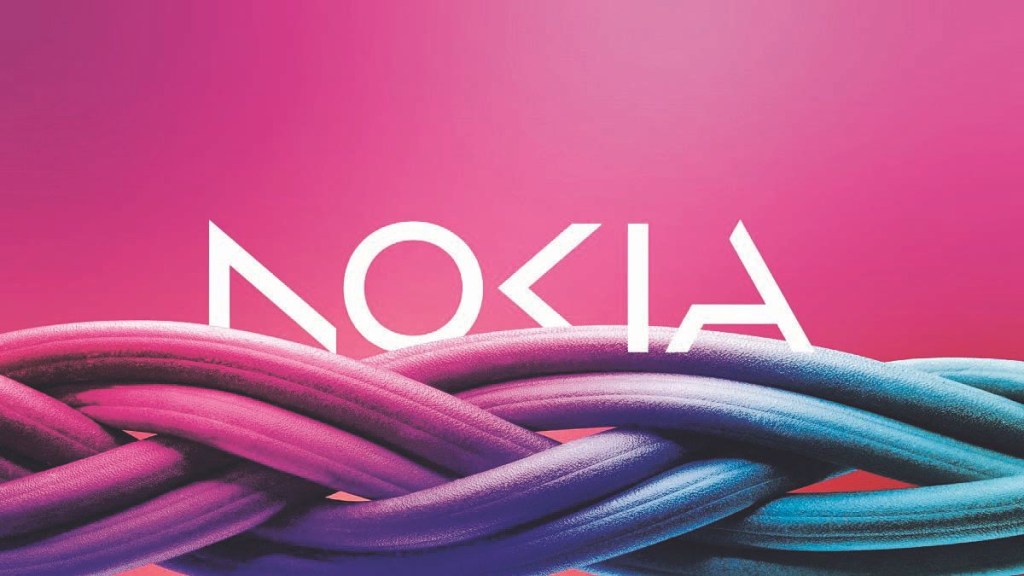What pops into your mind when you think of the brand Nokia? Ten out of 10 times you would think handsets. That’s no fault of yours. At its peak, the brand hogged more than 55% share of India’s mobile handsets market.
Then, hammered by cheaper Chinese-made phones on the one hand and high-end aspirational smartphones on the other, the brand sold out to Microsoft in 2014 and quietly exited the handset business. Since 2016, HMD has been the sole global licensee of all types of Nokia-branded mobile phones and tablets and the handset brand set foot in the country for a second time in 2017.
Now Nokia faces a unique identity problem — its handset travails seem to be cramping its style in the principal B2B networking equipment and services business.
To reiterate its technology heritage and to associate itself from its mobile past, the Finnish brand recently announced a brand overhaul, changing its logo for the first time in 60 years. The brand’s signature blue logo has now been replaced by one in a range of colours. The company’s CEO, Pekka Lundmark, just ahead of the recently concluded Mobile World Congress in Barcelona, explained that the change in logo is meant to distance the brand Nokia from the mobile and handset devices industry, which it sold to Microsoft about a decade ago. Nokia’s core focus is now technology — providing network infrastructure and software services. HMD Global continues to sell Nokia devices.

The rebranding exercise was long overdue given that Nokia is no longer in the smartphone business, say industry observers. Lloyd Mathias, business strategist and former telecom executive, notes that the brand has long lost its iconic brand status derived from the fact that it was the first mobile phone for millions of consumers. “Nokia will need to use the interest around the logo change to signal clearly that it now stays focused on B2B play, and has nothing to do with the handset category. It needs a kind of relaunch of Nokia in a new B2B avatar,” says Mathias.
According to Rishabh Mahendru, VP, client success at AdLift, while reinventing a brand is not easy, Nokia has made a flying start by becoming a name to reckon with in the technology innovation space. “In my opinion, they have already crossed one of the biggest hurdles. For the world however, Nokia has always been a mobile phone company, and changing people’s perceptions about that will take time,” he observes.
Beyond cosmetic change
Considering that Nokia will stay focussed on B2B offerings and digital transformation, experts believe that the brand needs to leverage its innovative DNA to get the message across. Beyond the rebranding and the logo change, the brand will have to demonstrate its real value in the next steps it takes. “To build a stronger brand, you have to pay attention to the needs of consumers and create products and experiences that serve them. A rebrand will serve its purpose if the intent behind the rebrand results in action. A brand new logo will in fact make people sit up and pay attention and after all eyes are on you, it’s important to come through and deliver world class products and experiences to customers,” points out Dhruv Warrior, national creative director at FoxyMoron.
Prabhu Ram, head, industry intelligence group at CyberMedia Research, adds that the future will be increasingly driven by digital and always-connected networks. These will translate into, amongst other things, opportunities in industrial and enterprise metaverse. Speaking about the brand’s India business, he notes that Nokia has been a strong and integral partner in India’s digital transformation journey over the years. “As a digitally advanced nation, India provides the perfect hotbed for Nokia to test, develop and realise the new opportunities that emerging technology presents,” he says. Nokia’s performance in India during the October to December quarter last year reflects this. The company reported a 129% YoY increase in sales at `5,043 crore from its India business, on the back of the 5G rollout in the country by the telecom operators, Bharti Airtel and Reliance Jio.
Nokia’s business from India during the quarter grew the highest among all its other markets including North America, Europe, China and others. India contributes over 5% to Nokia’s yearly revenues.
Moving forward, Nokia needs to figure out how to stay true to its core values without making the same mistakes of the past, maintains Foxymoron’s Warrior. After having lost its relevance and stronghold in the mobile handset space, he opines that the brand must learn from the past and stay focussed on its B2B business.
